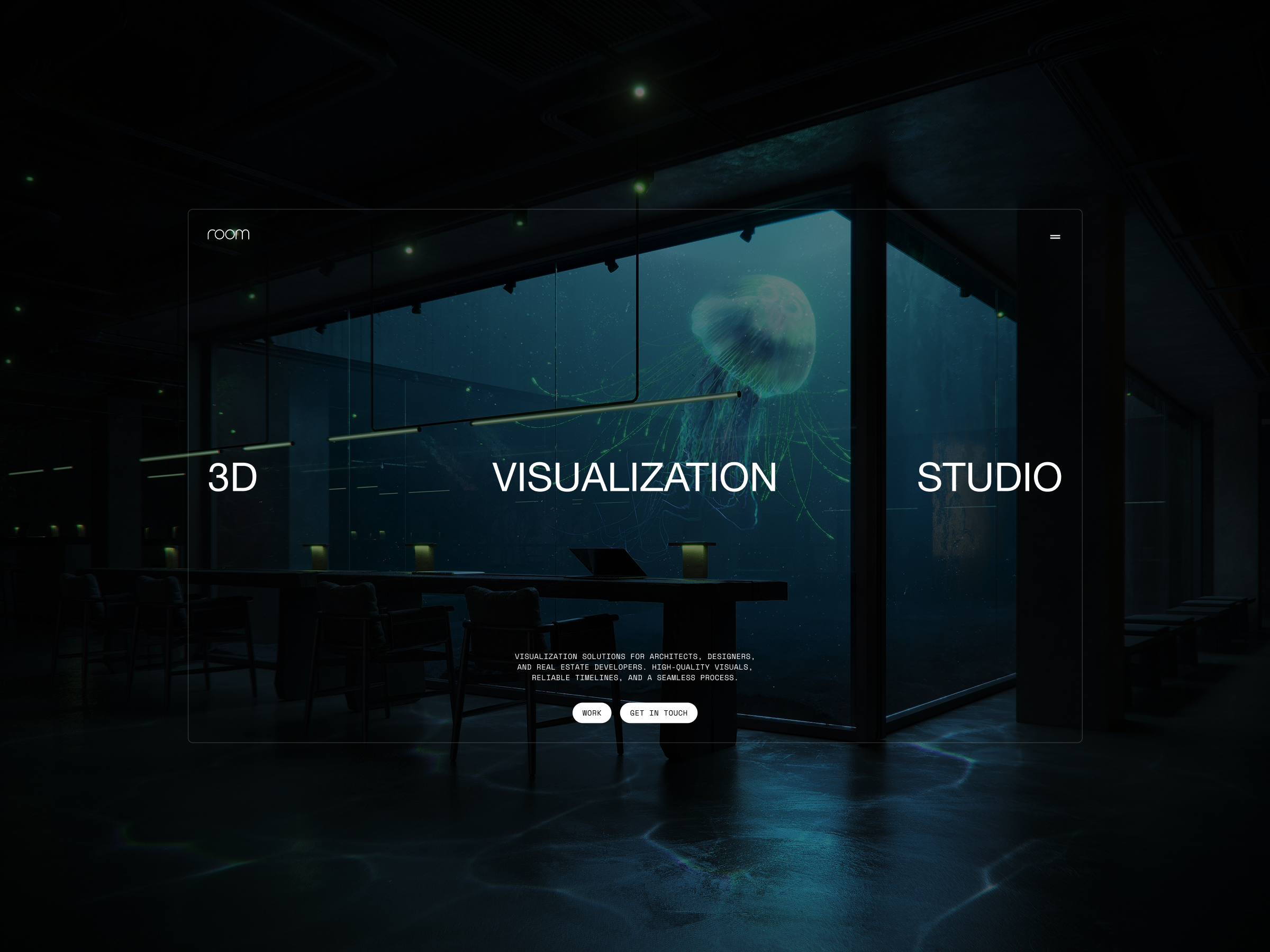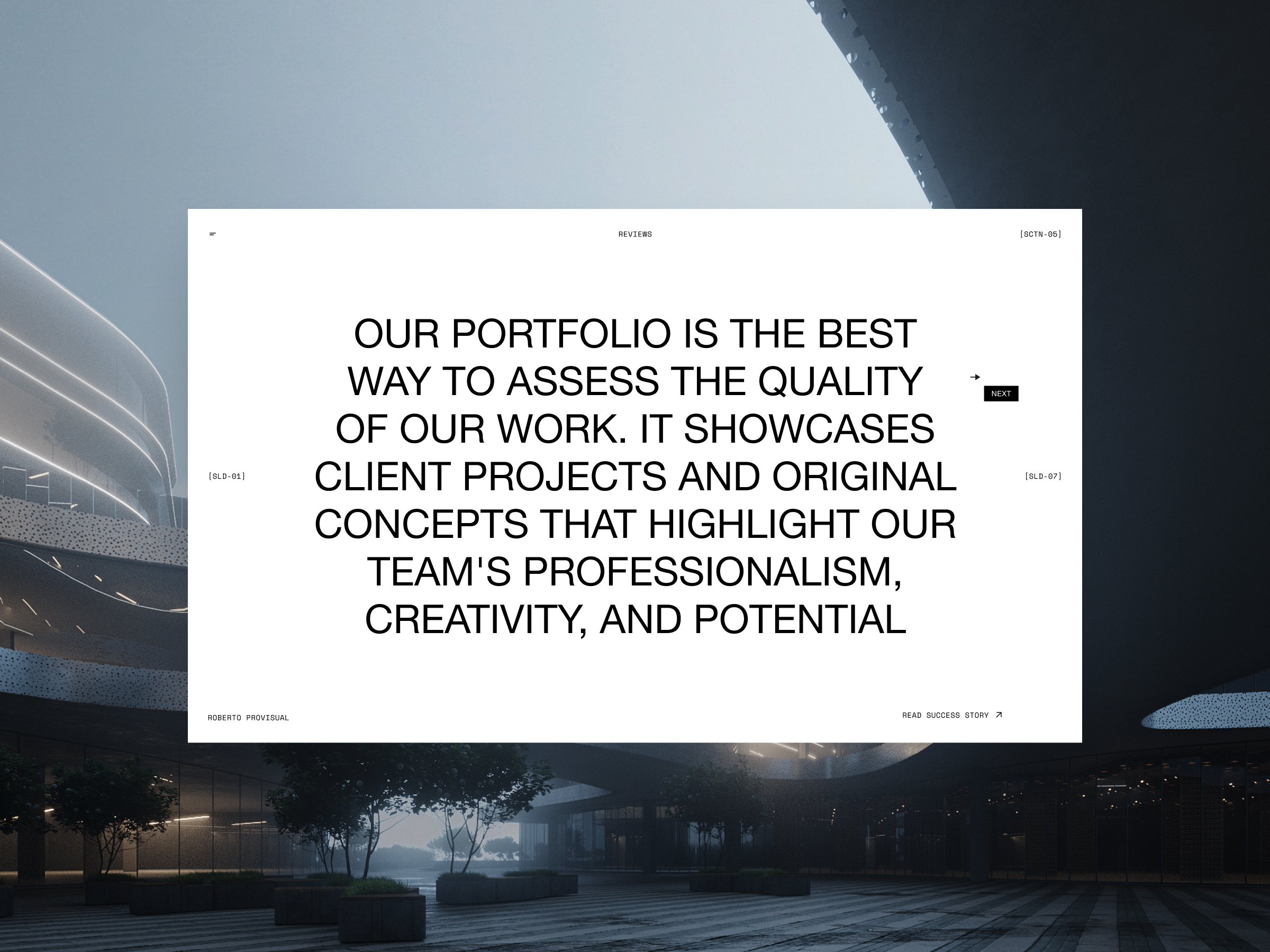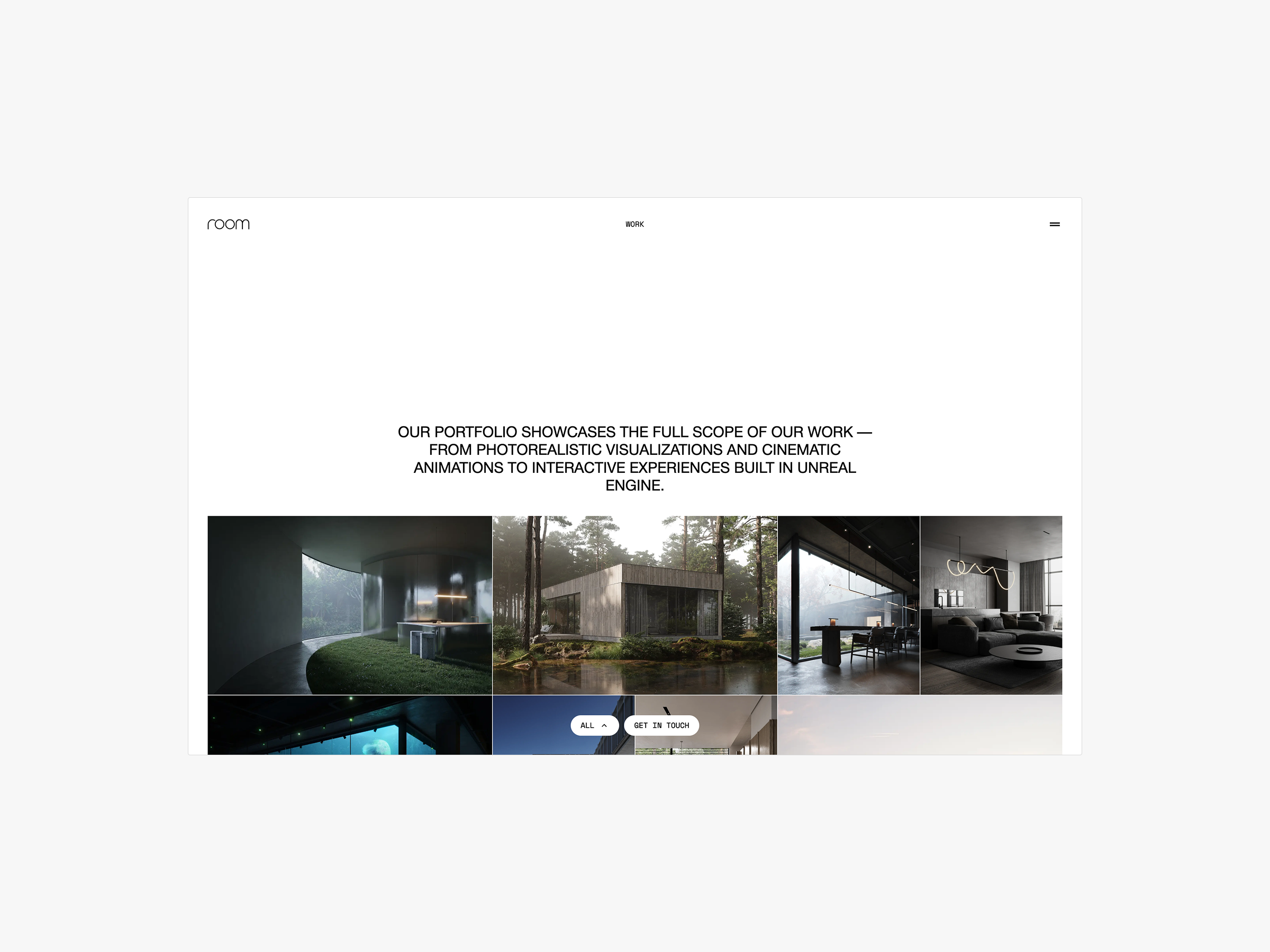


When we first partnered with Room, a cutting-edge 3D visualization studio, they were a rapidly growing startup. Their initial website, which we also helped create, served them well in the early days. However, as Room matured, won larger contracts, and refined its premium positioning, their digital presence began to lag behind.
The original site faced several critical challenges:
Visually and functionally, the site no longer reflected Room's elevated status and the high caliber of their work. It inadvertently projected the image of a smaller, less established studio, hindering their ability to attract the larger, more lucrative clients they were now targeting.
The user experience wasn't intuitive. Key information was hard to find, and the path to requesting a quote was unclear, causing potential high-value clients to drop off or fail to recognize the studio's full potential. The site wasn't effectively guiding users towards engagement.
As Room's marketing ambitions grew, the site hit its limits. The lack of an integrated blog and necessary third-party integrations hampered their content marketing efforts and operational efficiency.
The market had become more crowded with strong competitors. Room needed to clearly differentiate itself and communicate its unique value proposition more powerfully than ever before.

They needed a strategic redesign to create a digital flagship that matched their market leadership, converted high-value leads, and provided a scalable platform for future growth.



Our goal wasn't just to make the site look 'newer'; it was to rebuild Room's digital presence from the ground up, aligning it perfectly with their market leadership and growth ambitions. Our solution focused on four key pillars:
We started by revisiting the Brand Strategy established in our earlier work, ensuring the core values of "Quality, Care, and Technology" permeated every pixel.
We implemented a sophisticated visual language, leveraging the refined black-and-white palette, precise typography, and strict grid system. High-quality project imagery became the star, presented in immersive galleries that showcased the true caliber of Room's work. This immediately communicated a premium feel, attracting the higher-value clients they sought.
We completely re-architected the User Experience (UX) to eliminate friction and create a seamless journey specifically designed for Room's ideal, high-value clients. Through clearer navigation, strategically placed calls-to-action (CTAs), and a streamlined quote request process, we made it effortless for these prospects to understand Room's offerings and take the next step.
Key information was brought to the forefront, building trust early and actively guiding qualified users towards engagement, rather than just passively showcasing work.
While Room's site was already built on Webflow, its initial structure wasn't designed for the rapid growth and content velocity they now required. Our solution focused on re-architecting the page structure within Webflow to be inherently scalable. We designed flexible page templates and a modular component system, allowing Room to easily add new services, portfolio items, or landing pages without breaking the design or requiring extensive development time.
Crucially, we performed in-depth internal setup within Webflow and configured its powerful CMS to manage their new Blog. This now empowers their marketing team to publish articles, update content, and boost SEO independently and instantly. We also ensured seamless integration with necessary third-party tools, creating a future-proof foundation ready to evolve with Room's business ambitions.
We moved beyond generic templates. The entire design was custom-built, focusing on subtle animations, unique layout compositions, and interactive elements that reflected Room's innovative spirit.
This bespoke approach ensured the website wasn't just another portfolio site, but a memorable brand experience that clearly differentiated Room from its competitors.

While specific metrics weren't the primary focus of this strategic redesign, the qualitative impact on Room's brand perception and market positioning was immediate and profound. The new website successfully transformed how the studio was seen by both potential clients and industry peers.
Key qualitative outcomes included:
The most significant result was a palpable shift in how Room was perceived. The sophisticated visual language, grounded in their core values ("Quality, Care, Technology"), eliminated the previous disconnect. Feedback from the client's own customers frequently highlighted the site's professionalism and how it now accurately reflected the high caliber of Room's 3D visualizations. This directly addressed the core challenge of underselling their expertise.
The elevated, premium feel of the new website acted as a powerful filter. While we didn't track lead volume changes, the Room team reported a marked increase in inquiries from larger, more sophisticated clients, precisely the target audience defined in our strategy. The site began attracting clients who valued quality and were less focused on price, aligning perfectly with Room's goal to secure higher-value projects.
In a competitive landscape, the unique, minimalist black-and-white aesthetic combined with the focus on Room's stunning visuals made the brand instantly recognizable and memorable. The redesign successfully set Room apart from competitors who relied on more generic visual tropes, reinforcing their image as a forward-thinking, design-led studio.
The transition to Webflow proved transformative for Room's internal workflow. Their marketing team gained full autonomy over content updates, blog posts, and portfolio additions. This newfound agility and scalability empowered them to execute their marketing strategy more effectively and ensures the website can easily evolve alongside the business.
Roman really proved himself as a professional and accommodated our request the way we imagined.
The Room redesign demonstrates that the impact of strategic design often goes far beyond simple metrics. By focusing on aligning the visual identity with the core business strategy, we achieved a fundamental transformation in brand perception, attracted the desired clientele, and equipped Room with a powerful, scalable platform for sustained growth.